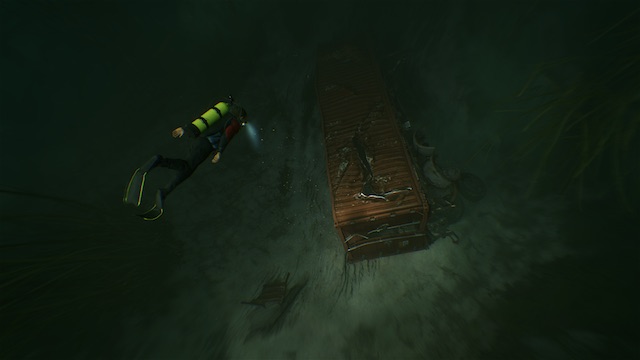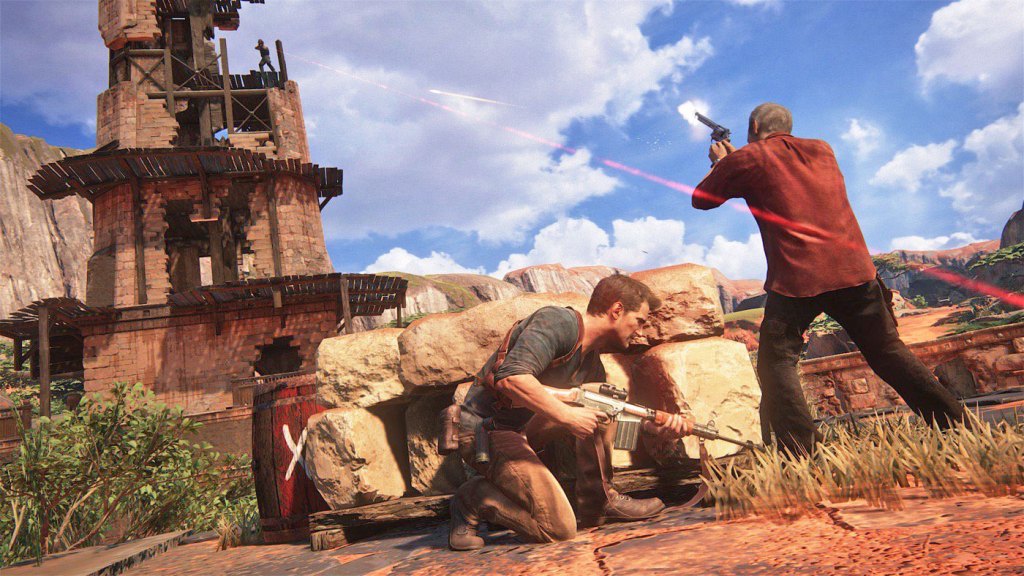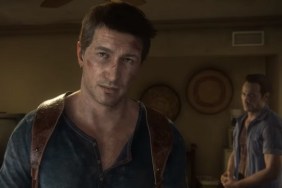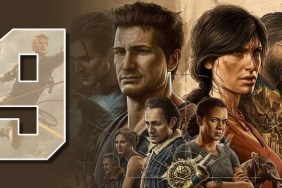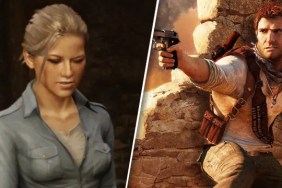[Reviewer's Note: This unscored review is based solely on the single-player campaign, as I was unable to try mulitplayer. Once I have time with the launch servers, I will complete the final scored review. Also there will be spoilers midway through this review.]
One Last Ride.
Let’s get the big elephant in the room out right way. Despite Neil Druckmann’s proclamation that the end of Uncharted 4: A Thief’s End would be controversial for fans, this simply isn’t true. The journey of Nathan Drake has come to a close. There are no major story threads left to tie up. Throughout my nearly 18 hours playing the single-player campaign, there were a few bumps, a few questionable choices in story and gameplay, but the end? I wouldn’t change a darn thing.
Uncharted 4 sees the developers at Naughty Dog continuing their quest to forge new stories for interactivity like they did in The Last of Us. This project is as much a follow-up to Uncharted 3 as the journey of Joel and Ellie. It’s also one of the best games of the year and should be purchased by any fan of action-adventure games immediately.
There was point a few hours into Uncharted 4: A Thief’s End when I got a bit worried. The now "required" opening flash-forward and flashback were both a tad too game-y. The first scene involves Nate and his once-thought dead brother Sam (read: retcon addition) on a boat chase in a storm to an ominous-looking island. The boat ride takes too long, and the controls are kind of wonky. Eventually, the boat stops and a shootout begins much like the opening of the very first Uncharted. It’s a nice enough wink, I suppose, but not really thrilling or graphically engaging. The next chapter sees a young Nathan being scolded at an Catholic orphanage. As you navigate the dark rooms to sneak outside, the hallways are way too wide. Again, game-y.
Thankfully, things perk up once you get your new tool: a grappling hook. Each swing has a sense of freedom; the camera is positioned with the best angles, making each leap incredibly satisfying. I could do this all day.
Then, some seemingly small happens. Nate, on the phone with his now spouse Elena, lies to her. Sam had shown up needing his help in finding the treasure of famed pirate Sir Henry Avery to pay a debt to crazed drug lord Hector Alazaar, “The Butcher of Panama.” Avery’s booty is said to be worth $400 million. Instead of just telling our favorite video journalist the truth, Nate tells her some bogus story about going on a smaller, less dangerous expedition, one that is hinted at his day gig of deep-sea salvaging, a Malaysian job.
Worse, he doesn’t even mention the whole "Sam being alive" thing. I was completely onboard for this latest adventure, but it really bugged me that Nate would so casually lie about where he was going. If he could lie to her so easily, had he been lying to himself? Could one of my favorite explorers and his cohorts never really be satisfied with treasure yet to be plundered? And did this basically mean Nathan Drake has been kind a jerk? By the end, most of these questions wrap up well, but some of these narrative leaps felt clunky early on.
Still, make no mistake, nearly five years after Drake’s own deception, developer Naughty Dog has delivered a rousing, emotionally stirring, and best of all, morally-taxing last adventure. As expected, the level of polish is unreal, both visually and aurally, and in terms of level design. Their last title, The Last of Us, is what co-director Druckmann needed to make before delving deeper with Nate.
For one thing, the downtime moments in between the firefights and puzzle-solving, is the best they've ever been, and feels similar to the quieter scenes between Joel and Ellie. As Nate and Sam explore a massive Catholic grave or look in wonder at a Raiders of the Lost Ark-inspired map of Madagascar, great amount of items are just begging to be picked up, rotated, and further inspected. Also, the reliance on a partner has never been more necessary as Sam will often offer Nate a hand to pull him up to a higher plateau. Other times, Nate will find a crate to push that is highlighted with a triangle button just like in Last of Us. Having Nate constantly talking to someone just feels so natural while driving a jeep or traversing a lost city. These are the moments that ground our adventurers as normal(-ish) people.
Slip Slidin’ Away
Whether Nate is driving, shooting, swinging, sliding, or being stealthy, Uncharted 4‘s gameplay is the best of the series. Everything is superbly refined. In the past, the shooting galleries have been among the most monotonous sections and the designers have done their best to keep that feeling of repetition to a minimum. Nearly every excursion is presented as an opportunity for Nate to scope out the area, tag the bad guys, and then do as many stealth takedowns as possible before (at least for me) being inevitably seen, leading to a shoot-out.
There are plenty of places to hide like tall, wavy, richly-detailed blades of grass, or diving underwater or hiding up high on an ancient ruin. The trick is to tag as many as you can while stationary, since using the L2 button with L3 is pretty much impossible while on the move. All the weapons feel solid, though there aren’t really any standouts. Ammo, at least on moderate (the game’s version of normal difficulty), is plentiful.
The main gameplay is the platforming which is more open in design this time around. You can still tell apart the obvious lightly colored ledges and other places to put Nate’s hands, but the routes are more varied. Occasionally, I did get a lost a few times though, as that openness can sometimes just lead to dead ends. If you have the hints option on, eventually a “hint” will pop up and tell you where to go. There is no detective mode so the timed hints come in handy when you’re up high on a cliff, stranded. In general, the layout is pretty much inspired by Journey; look for a big mountain or other place off in the distance and go there.
The two most prominent mechanics are using the aforementioned grappling hook and having to jump quick to the left or right when sliding down a muddy or rocky hill. Both are quite fun, adding a level of "Oh, yeah!" excitement. In theory, viewing hints or finding a vehicle or an ally is used by pressing up or down on the directional button, but they do seem time-sensitive. I get why this happens for hints, but I should be able to find Sam or my jeep whenever I want.
The vehicle missions are few and far between, but the jeep handles really well. The muddy terrain in Madagascar is messy and just the right amount of frustrating. The use of a winch to pull the vehicle up steep inclines is great. I only wish the winch, which can topple trees too, was used more often.
Once you’ve finished the story you can go back and not only replay chapters to look for journal entries, notes, and optional conversations, but you can even choose “encounters” which are only the firefight moments. Also, those optional conversations are another aspect taken from The Last of Us, where you approach a character and hit triangle to talk and sometimes get to choose what to say. It’s not very deep, but I appreciate the effort.
Nate using his journal finally feels integral to exploration. Sometimes it’s a fun doodle, like a drawing of a menacing pirate made to look adorable. You’ll also need to use this book in order to figure out puzzles since it’s become more tactile, with Nate being able to rip a page out to rotate icons into a desired order. Filling in the journal helps with making the narrative feel more cumulative, and by extension, Nathan.
“This isn’t My First Lost City”
The main story is focused on the price of obsession and how that affects everyone in Nate’s life. The historical background concerns Saint Dismas who was known as the Penitent Thief, one of two criminals who were crucified at the same time as Christ. The other thief… not as good-natured. This pretty much sets up the dynamic relationship between Nate and his brother, Sam. Their main goal, Avery’s treasure, takes them across the globe usually on the thinnest plot thread, like another clue that says “Now go to Scotland!” But it helps that the characters (read: writers) crack wise about this sort of plotting. As the journey digs deeper into pirate lore, the locations get more expansive, more awe-inspiring.
It should be noted that the giant spectacles that Uncharted are known for are in short supply here. There’s an amazing chase with Nate in Madagascar that is gleefully chaotic, but most of the wonderfully-detailed environments are more reflective in feeling. This isn’t to say everything is gloomy, as the dialogue is still funny, but Nate is noticeably older now with his wrinkles, salt & pepper hair, and sad eyes. He wants to still think he can be this jet-setting raider of tombs, but he can’t. The beauty of this tale is that by the end, you don’t really want him to be.
The puzzles are mostly of the put-the-sigil-in-this-order variety. Each puzzle room is incredible to look at, though, and also adds to the mystique of the legendary pirates. But for the most part, they are not as clever as the brainteasers as the ones in last year’s Rise of the Tomb Raider.
Finally, while the end of the story is terrific, unfortunately, Uncharted 4 like its predecessors still concludes with a boss fight that is awkward and annoying. To say too much would spoil, but the controls don’t make sense from the point of view given. That’s all I’m gonna say on that.
The Gang’s (Mostly) All Here
Troy Baker (Joel in The Last of Us) does what he can, but Sam is no Sully. He’s essentially the guy that is hardened by life and can’t be trusted, but through Nate’s eyes, he must be saved. What’s best remains the shooting-the-breeze banter between Baker and Nolan North (as Nate), although sometimes I think they can sound too similar. Thankfully, the subtitles shows who is saying what.
The highlight of Thief’s End is all the exchanges between Nate and Elena (the lovely Emily Rose). These two characters and their real-life actors have a lived-in feel to their moments. I could watch them sit on the couch and play a video game all day. Unlike so many onscreen couples that fizzle out once the love/hate vibe disappears, Nate and Elena are the couple you root for. I’m all for seeing an adventure with Elena as a protagonist and Nate as the supporting one.
As for the rest of the cast: Victor Sullivan shows up only occasionally, but each moment is well-used. I especially liked seeing him and Nate at an auction. It’s a better-executed scenario than the James Bond-like opener in Uncharted 3 with more time to talk, more cleverly crafted sneaks. As for the new characters besides Sam, they don’t leave much of an impression. The main villain, Rafe, is a typical entitled trust-fund douchebag, while kick-butt Nadine who controls Shoreline, the generic mercenaries, has little to do, although her fight scenes with Nate are really well-handled. Nate might try to take her down, but it’s nearly impossible, and the expert choreography makes us understand why.
Fortune and Glory, Kid
By the time the campaign ended, I can’t imagine any fan of the series will be let down. Throughout the twenty-two chapters and a wonderful final level that you won’t want to miss, Nathan Drake’s story is finally complete. Whatever a future developer chooses—Naughty Dog has said this is their last Uncharted—they have mighty big shoes to fill. Muddy, worn out, hilarious shoes…
Uncharted 4 single player
-
Uncharted 4 single player #1
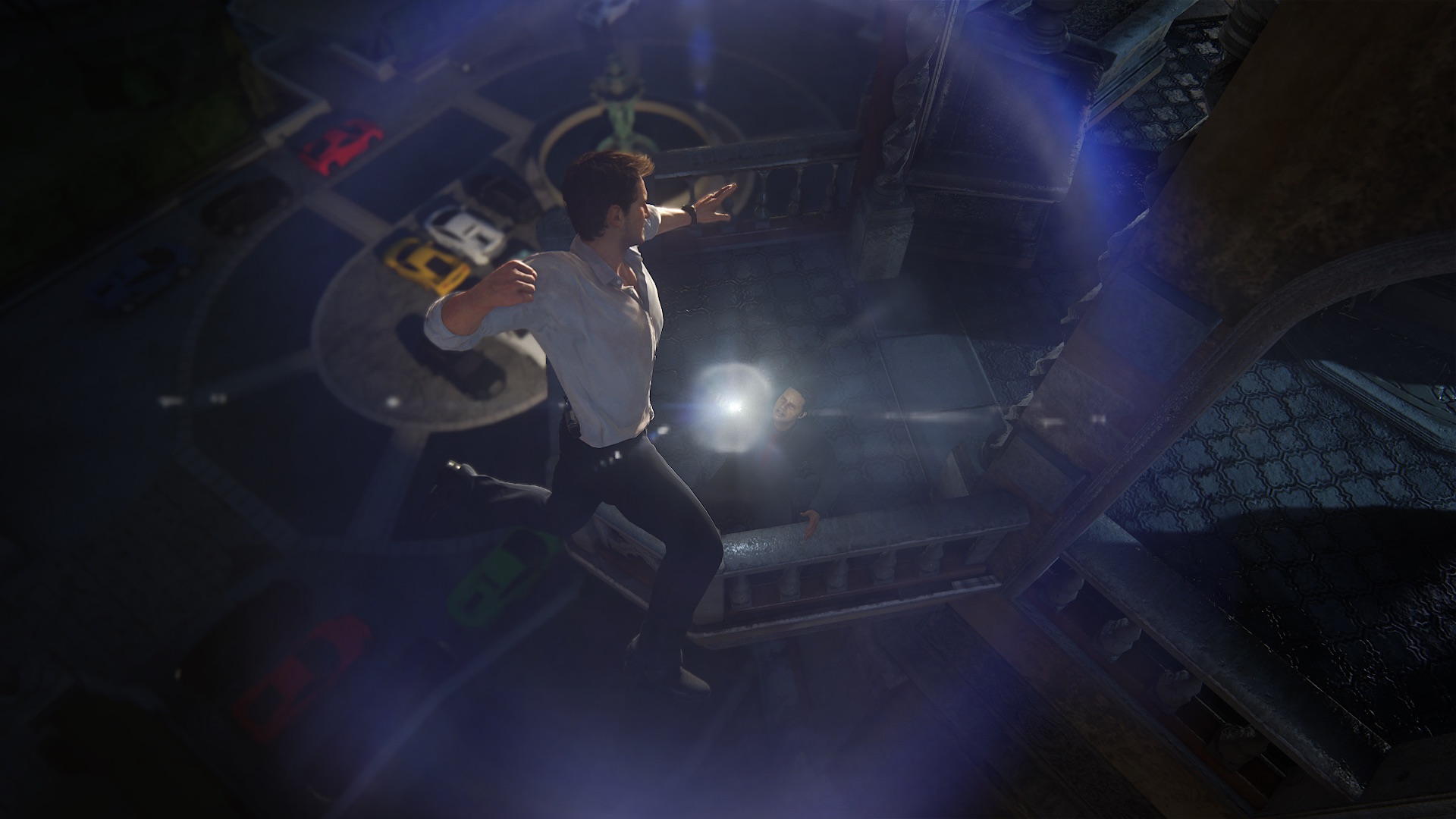
-
Uncharted 4 single player #2

-
Uncharted 4 single player #3
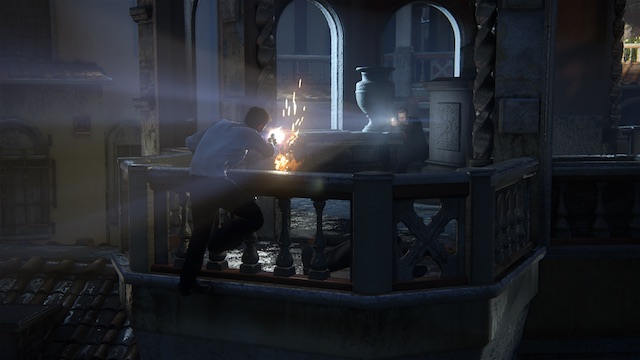
-
Uncharted 4 single player #4
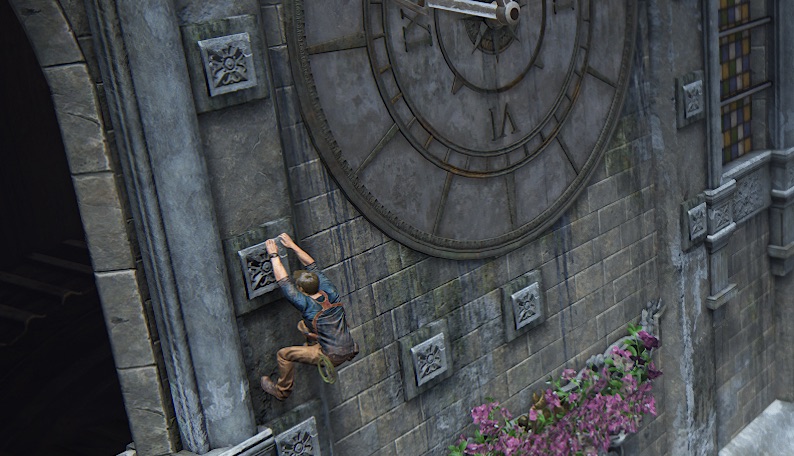
-
Uncharted 4 single player #5
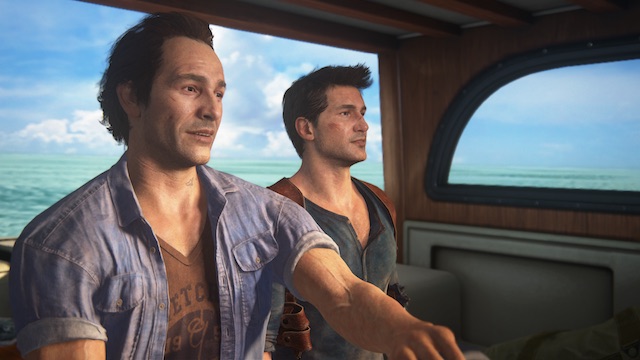
-
Uncharted 4 single player #6
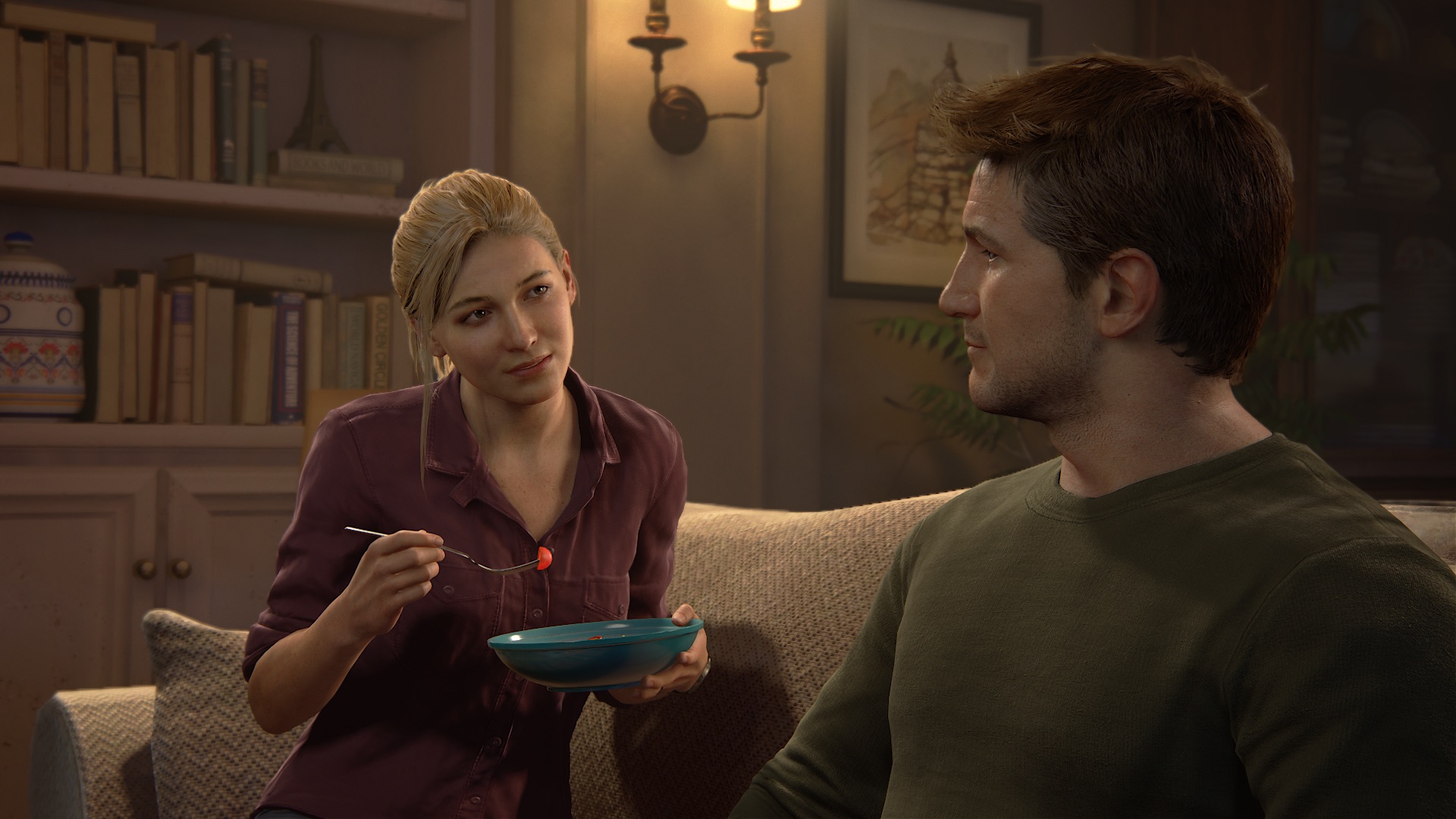
-
Uncharted 4 single player #7
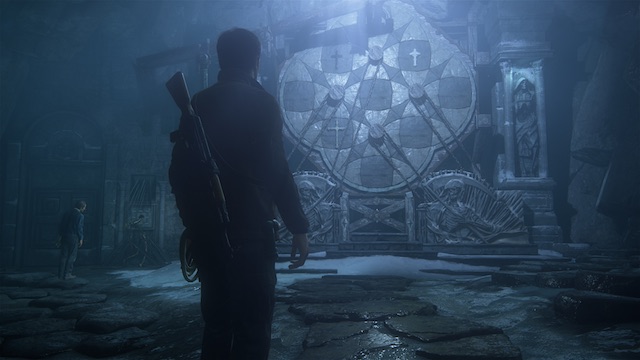
-
Uncharted 4 single player #8
